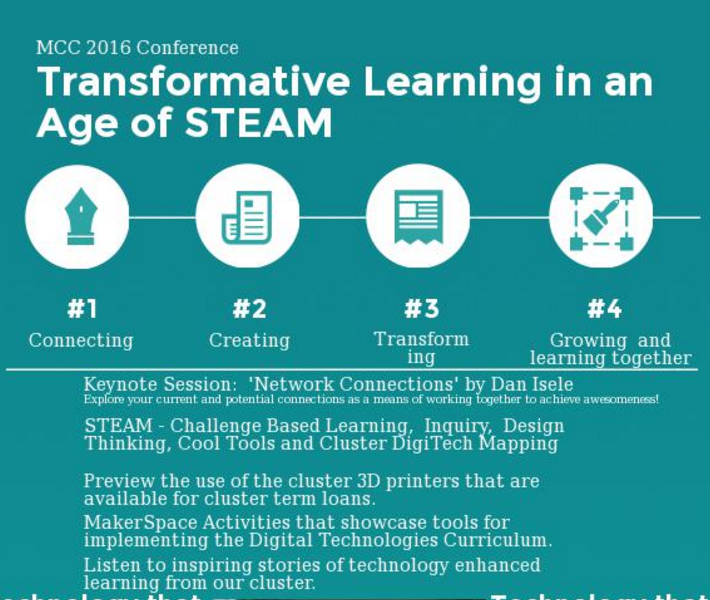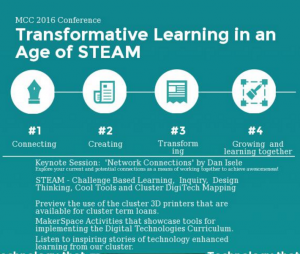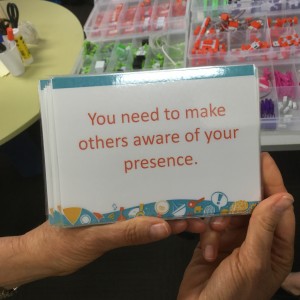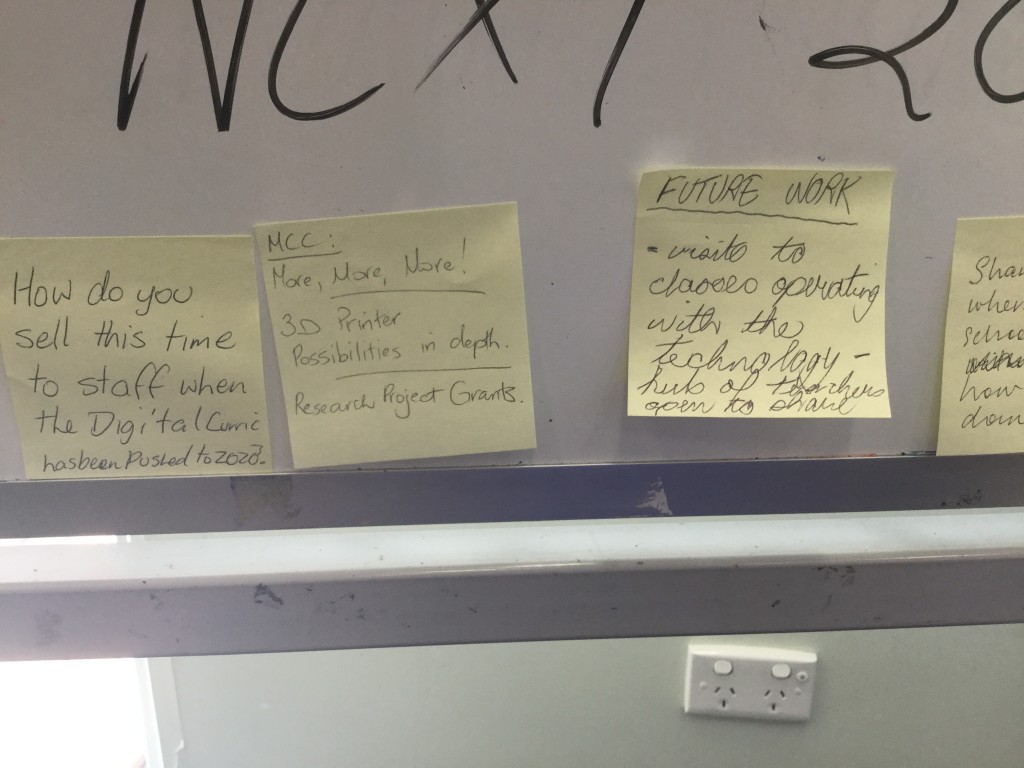Our school hosted a Conference yesterday for our MCC Cluster that is part of an evolving model of support for teachers in our 11 schools. It was a brilliant day with varied content and delivery models allowing teachers to consume and hear but also to experience, discuss and tinker/play.
This event is the second of its type we have facilitated and it is always a combined effort with our team of eLeaders planning and facilitating and this year we welcomed several new teachers to be presenters. We were also lucky enough to have Dan Isele facilitating a session on the value of networks and Nathan Burgess – Director Innovation at Trident Computing – to discuss 3D printers.
We started the day by looking at STEAM and asking ourselves what this concept is all about. We discussed the value of bringing curriculum areas together and working against the ‘silos’ approach that is endemic in education. We also talked about the potential for authentic and real-world problems being addressed by young children and how STEAM made this possible. We looked at a project that was the result of a collaboration between Cathy Hunt – Art Teacher Dynamo and Dan Martinez – from St Hilda’s (and both absolute Tech Champions)and the different elements that were present in that learning experience. We also looked at a project by the Hong Kong Harbour School where 9 year old students investigated a solution to the identification of plastic in their waterways and prototyped a solution.
Dan Isele then presented a session on the value of networks and the importance of realising who and what you can access to start forming different networks. He also presented a very interesting coaching and learning model which involved 5 week cycles of learning. It was a very thought-provoking session for all teachers and not just those of us who are in coaching positions as the same process can be applied to the learning of our students also. It was a model to build capacity and also to promote sustainability as it was limiting dependance on just one person within your school – instead it promoted accessing different people from your network in each cycle as you moved from the ‘learning pit’ to a place where your learning was embedded and sustainable.
Some of Dan’s resources are stored in this padlet. (Please also see some feedback from teachers about networks captured in a Socrative quiz at the base of this post).
We then moved to looking at Digital Technologies with an explanation given about the differences between the ICT General Capability and the new curriculum area. We delved into it and discussed the key elements and the overarching ideas and looked at computational thinking – and discussed the potential for teachers to be assisted to understand that many elements of their everyday teaching lent themselves to the discussion of computational thinking. As a cluster, we also discussed paths forward for the approach of this curriculum. A padlet of some key resources are here.
We then moved into a MakerSpace style rotation. We are grateful to Ashleigh Smith and Bob Rogers from Learning Technologies for helping us with this. We were also lucky to have Nathan Burgess from Trident Computers helping to explain the potential of 3D printers in learning as the MCC has purchased a number of these to loan out to interested schools.
Technology we had out for people to look at included:
Dash Robots
OzoBots
Probots
Beebots
Innobits
Little Bits
Makey-Makey
Our next session allowed 2 rising stars in our cluster – Chantelle Sansness and Troy Metcalfe to share their work. Chantelle has collaborated with her fellow teachers to develop a unit that aligns Geography and Digital Technologies – with the students working to create a solution to inform their community about being ready for a natural disaster. This work offers a leading light in curriculum design involving this new curriculum area. It also showcases the use of design thinking to not only design a unit but to scaffold the students in their thinking and work.
Troy has been using AR to create learning opportunities for his students and shared his journey along with the trials and successes of what he has experiences. The opportunities this offers to students in terms of engagement are immense.
Nathan Burgess then discussed a learning unit at a previous school of his which involved the science of propulsion and the use of 3D printing to enable prototyping of solutions. The use of 3D printing in this unit took the students further and deeper in their learning than ever before.
The afternoon session was allocated to some “MasterClass” style learning with teachers choosing from a range of workshops to allow depth of learning. This included:
Course building with iTunesU
Learning Portfolios with Book Creator
Making your thinking visible with Explain Everything
Visual Programming in Digital Technologies
OSMO to enhance STEAM
Thoughts and feedback:















